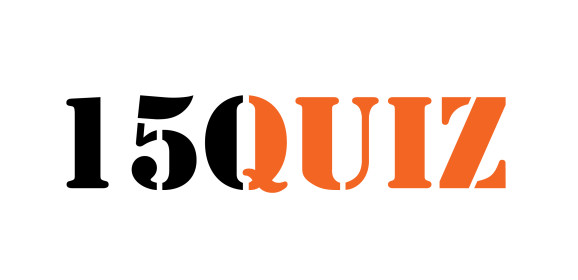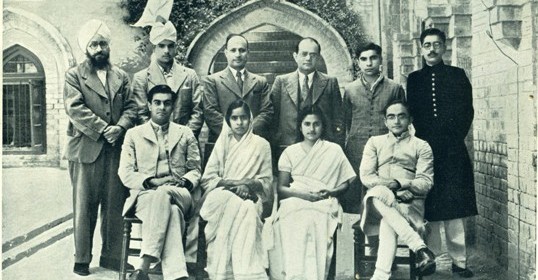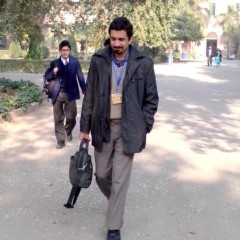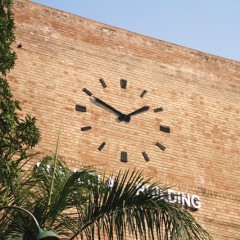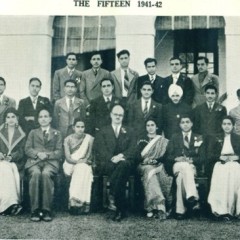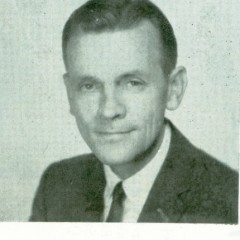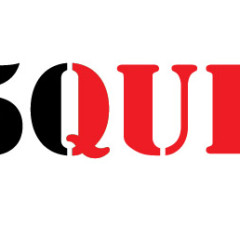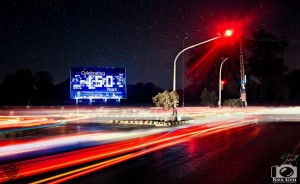My Bond with FCC
by Muhammad Umer Chaudhry After studying for 11 years at an army school, I wanted to go to an army college with the plan to somehow join the military, but my parents had other plans. They asked me to apply to FC College, telling me, “Come on! It’s Gen. Musharraf’s institution (I was a fan).” Well it was a lucky day in 2004 when I did get admission here. At FCC I was fortunate to study under some of the finest and most dedicated Physics teachers who introduced me to this, as I say, “glamorous” subject, and I chose Physics to be my career. I also took admission in the Baccalaureate program here in 2006 and learnt a lot about life other than Physics: how to serve one another by love; how to make yourself a source of happiness or comfort for others rather than being a menace for society; how not to sit back in certain situations but to speak up against the ills of society, against injustice whether it be directed towards us or anybody else. And these lessons are the most precious ones that FCC taught me. I have the deepest love for this institution where the values of inter-faith respect, gender equality, impartiality and opportunities for everyone to progress are stronger than anywhere else in the country. Now I am back at FCC as a teacher of Physics. Fortunately I have found that while the campus is becoming more and more beautiful and full of facilities and infrastructure, the golden values remain the same here as before. I pray that this culture stays like this forever and I want to play a positive part in making it...
And the Time is …
by Eileen Dass When I got the new FCC 2014 calendar, I sent it to my niece in Karachi. One night I got an urgent phone call from her. She said she needed to ask something, and didn’t have much credit left on her cell phone so she wanted a quick answer. I got worried and asked her the problem. She said she had looked at all the pages of the calendar and couldn’t find the “150” on the photograph of the Susheela Building (the September photograph). I asked her, “What time does the clock on the building show?” She answered, “Ten minutes to two.” I asked her, “And what is ten minutes to two?” Finally she got it, and said, “One fifty.” This has been the most interesting calendar FCC has printed to...
Winner of January 150 Quiz: Eileen Dass
Congratulations to Ms Eileen Dass (Rector’s Office) for scoring the maximum number of points in the January 150 Quiz. Eileen beat four others who also got all 10 questions right but sent their answers after her. They are (in order of answers received): Ms Sehrish Mushtaq (Department of Mass Communication), Ms Jacqoline Austin (Department of English), Ms Nimra Nazar (Purchase Department) and Mr Zeeshan Safdar (sophomore). Thank you to everyone who participated and don’t forget to take part in the next quiz. The February 150 Quiz will be announced on 3 February...
Earliest Student Societies
The oldest society of the college is the Debating Society, established in 1887. It organised debates on topics which, surprisingly enough, were mostly political. One topic for a debate in 1905 was: “Resolved that the Indian National Congress has done more harm than good”. (The motion, when put to vote, was carried.) We also find mention of two rival societies, the Academical Society and the Gladstonians. Every year the two societies met at an annual debate which was a popular and much-awaited function. There was a Cosmopolitan Society which met every Saturday in Dr Griswold’s room and whose subscription was one anna per month. The Social Service League was founded in 1907 by Mr Fleming. It had no office-bearers and each member was supposed to render some social service every week and report it to the society. These were published in the Folio. Social work meant anything from reading books to the illiterate to persuading people to give up smoking. A proud report ran like this. “I read Fasan-i-Azad loudly to others in order to impress upon them the bad effects of opium-taking.” A Temperance Society was formed, though we wish to believe it was not needed. Two literary societies were formed in 1889. In 1914-15, we are told, there was a big crop of “crazy gangs” in the college. But, alas, only a few, like “Chaudhary Brotherhood,” “Mota Club” (what weight they carried in college politics we do not know), “Laughing Club” and “Ugly Club” (was membership open or secret?) are mention in the college journal. The Science Society organised by Mr Shah and Mr Benade was formed in 1915. Next year the most illustrious club, the “Fifteen”, was organised. Its membership was coveted by every student for it consisted of only the best. Essentially a literary group , it produced a number of writers and intellectuals. There was also a “Fiverise” Society founded in 1916 whose first Secretary was G. L. Nanda, now the Indian Home Minister. A Speakers’ Union was formed in 1919, and Literary Society founded by Mr M. S. Bhatty. The same year the “Economics Club” and the Rice Philosophical Union were established. The Dramatic Club was organised in 1942, although in many later issues of the college magazine the question was anxiously asked: “Where is the Dramatic Club?” The same question is being asked today. The Griswold History Society came into being in 1923 and Urdu Society in 1924. There is a mention of a Co-operative Sales Society in 1919 with Mr Benade as the man in charge. Its share was valued at Re. 1 and it was compulsory for all students and...
Remembering Dr Ritze
by Dr Rehan Siddiqui In 1966 I got admission and a tuition scholarship for graduate studies at the University of Cincinnati, USA. The university did not offer me an assistantship for my board and lodging. Everybody discouraged me from going to the USA without financial assistance. Dr Fritz Ritze, who was teaching English at FCC, met me in a meeting and discussed the situation with me. He said, “Rehan you must go because I know that you will get the financial assistance when you join the university and show your performance. If you feel you have no money to eat I will support you from New York.” On his encouragement, I went to Cincinnati and got financial assistance. Now I feel that those encouraging words helped me in improving my qualifications. Dr Ritze was a role model and he believed in the college motto: “By love serve one another”. Photograph of Dr Ritze: The Yearbook – Folio: Forman Christian College, 1971-72. Photographs of Dr Rehan Siddiqui from his personal...
January 150 Quiz Answers
This is the second in our series of quizzes to celebrate FCC’s 150th anniversary. This quiz looks at some aspects of FCC’s history. Here are the correct answers for the January 150 Quiz: 1. Dr Charles W Forman was the founder of the Mission School, the first English-medium school in Lahore, which grew to become Forman Christian College. What does the “W” in his name stand for? Answer: William 2. FCC’s motto “By love serve one another” is a Biblical quotation. In which book of the New Testament is it found? Answer: Galatians 3. FCC was the first college in this part of the subcontinent to allow female students to enroll. Which year were the first female students admitted? Answer: 1902 4. Non-British nationals occasionally receive knighthoods for contributing to relations between their country and Britain. Which FCC principal was a recipient of such a knighthood? Answer: Dr James Carruthers Rhea Ewing 5. FCC is famous for a number of “firsts” in the region. Which of the following was NOT a first for FCC? Answer: The first to have a students’ Dramatics Society 6.The FCC Library once owned a book of poetry by a Romantic poet which included a letter written in his own hand. While the original book and letter have disappeared, a copy of the letter’s contents remain. Who was the poet? Answer: Byron 7.The origins of United Christian Hospital go back to when FCC converted two of its hostels into a hospital to treat wounded refugees at Partition. Which two hostels were these? Answer: North (currently Shirazi) and West Halls 8. Lahore’s educational institutions have produced a number of accomplished writers. Which of the following was a Formanite? Answer: Krishan Chander 9. Originally called Centenary Hall to celebrate FCC’s 100th anniversary, Sinclair Hall was designed by the Daghestani-born architect Nasreddin Murat Khan. Which famous building did he design in Lahore (incidentally, free of charge)? Answer: Minar-e-Pakistan 10.The first graduates of Forman Christian College received their degrees from which university? Answer: Calcutta...

